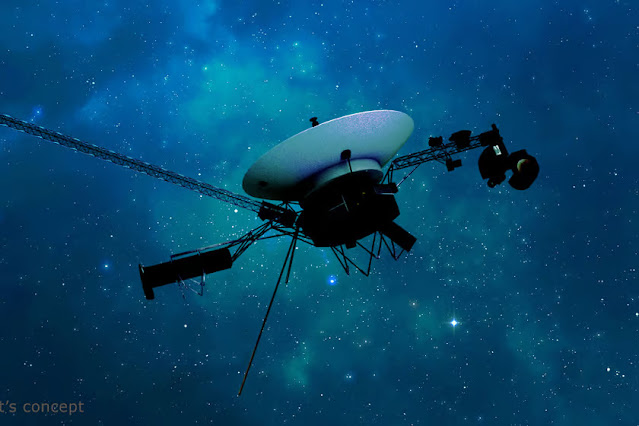In order to maintain contact with Earth for a further five years, the thrusters on NASA’s Voyager 1 and 2 interstellar probes will be able to run on a software patch that is now being developed by the mission engineers.
Since its 1977 launch, the Voyager spacecraft has been in operation and has far outlived its intended lifespan. Although they are a credit to the design teams that created them, their very longevity after nearly 50 years is leading to new issues that were not expected.
Among these is the aging of the hydrazine-fueled thrusters that kept the Voyagers’ high-gain antennas pointed toward Earth. The thrusters themselves could use some cleaning, but they still have enough propellant to last until 2037 because of meticulous conservation work done by Mission Control at the Jet Propulsion Laboratory (JPL) in Pasadena, California.
The issue is that each thruster firing over time has left residue in the system, which has been gradually but steadily accumulating. The spaceship could be destroyed if the fuel lines choke due to excessive accumulation.
NASA engineers are developing a software patch to stop this from happening, which will instruct the Voyagers to fire their thrusters less frequently but for longer periods of time in order to preserve their attitude. Furthermore, before entering emergency mode, the probes will be instructed to let their focus on Earth drift farther than before. According to the space agency, in the long term, more data will be returned despite some data loss.
The patch will also fix a bug that resulted in the Attitude Articulation and Control System (AACS) of Voyager 1 misdirecting commands in 2022. The software upgrade carries some risk. In addition to being out of date and traversing a very hazardous environment, the Voyagers take eighteen hours to send a signal from Earth to the probes. This implies that before Mission Control became aware of an issue with the upload, it would take at least 36 hours. Consequently, before attempting to communicate with Voyager 1, the initial transmission will be sent to Voyager 2.
It is hoped that the improvements will provide the thrusters an additional five years of service. There will be a large margin of error because it is only anticipated that the spacecraft’s nuclear batteries will survive for a further two years.
According to Linda Spilker, project scientist for the JPL mission, “the engineering team is being faced with a lot of challenges for which we just don’t have a playbook” thus far in the mission. “But they continue to come up with creative solutions.”

.jpg)

